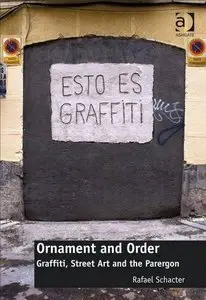Rafael Schacter, "Ornament and Order: Graffiti, Street Art and the Parergon"
English | ISBN: 1472409981 | 2014 | 304 pages | PDF | 9 MB
English | ISBN: 1472409981 | 2014 | 304 pages | PDF | 9 MB
The fact that practices often termed 'graffiti' or 'street-art' have been a popular global phenomenon and have increasingly been taken seriously by the art establishment has changed the widespread perception of them and led to debates which argue over whether these acts are vandalism or fine art, and which examine the role of graffiti in gang culture and in terms of visual pollution. Based on an in-depth ethnographic study working with some of the world's most influential Independent Public Artists, this book takes a completely new approach. Placing 'graffiti' within a broader historical, political, and aesthetic context, it argues that these practices are in fact both intrinsically ornamental (working within a classic architectonic framework), as well as innately ordered (within a highly ritualized, performative structure). Rather than disharmonic, destructive forms, rather than ones solely working within the dynamics of the market, these images are seen to reface rather than deface the city, operating within a modality of contemporary civic ritual. The book is divided into two main sections, Ornament and Order. Ornament focuses upon the physical artifacts themselves, the various meanings the public artists ascribe to their images as well as the tensions and communicative schemata emerging out of their material form. Using two very different understandings of political action, it places these illicit icons within the wider theoretical debate over the public sphere that they materially re-present. Order is focused more closely on the ephemeral trace of these spatial acts, the explicitly performative, practice-based elements of their aesthetic production. Exploring thematics such as carnival and play, risk and creativity, it tracks how the very residue of this cultural production structures and shapes the socio-ethico guidelines of my informants' lifeworlds.



